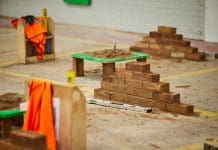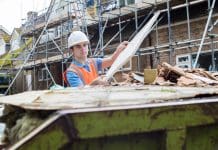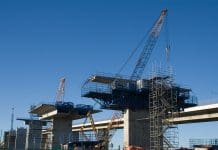Gary Newman, Executive Chair at the Alliance for Sustainable Building Products, summarises their involvement in creating a circular business model for the steel industry…
The Alliance for Sustainable Building Products (ASBP) is commencing work on a new project funded by Innovate UK, exploring a circular business model: one where ‘resources are kept in productive use for longer, following primary production – ideally at the same value/use.’ The circular business model that ASBP is investigating is in the re-use of structural steel.
Currently 93% of hot rolled steel sections are recovered from buildings, and recycled, but only 5% of steel is currently re-used. There is huge potential for energy and financial savings if steel building elements are re-used rather than melted down and re-manufactured. Overcoming the barriers to this could kick-start a market worth of 25kT per year, 10% of current UK scrap arising, with a value of £12.5m. The BRE have calculated that re-used steel has only 2% of the carbon emissions of new steel. Furthermore, the re-use supply chain will demand new skills and create new employment opportunities.
This change is likely to take 5-10 years, as it would need a radical rethink around the whole design and delivery process, and a shift in culture requiring new routes for effective communication. For instance, architects and demolition experts may be working together for the first time. These new and existing relationships and exchanges of material all provide value, and the resulting ‘Value Network’ will be crucial to its success.
Over the past few years, many new innovations have been introduced into the construction industry. Technology developments have offered the potential for greater energy efficiency, reductions in waste and more comfortable buildings. However, the expected benefits are not always delivered, and it is not always due to the technology. More often, it is down to a failing within the process of communication and responsibility that prevents these innovations from being successful.
This project will provide a response to this problem by exploring value networks and circular business models. Studies have shown that $520-630bn a year in raw materials could be saved by employing ‘circular business models’. By working with business, academics and the steel industry, the ASBP is tasked with investigating this question for this sector.
The potential for a re-used steel supply business will be explored with the help of a team including structural engineers Ellis and Moore, the Steel Construction Institute (SCI), and Cullinan Studio. The National Federation of Demolition Contractors, UCL Institute of Sustainable Resources, University of Cambridge and Cleveland Steel and Tubes will all contribute expertise to the project.
The ASBP are exhibiting at this year’s Greenbuild EXPO in Manchester, November 10th-11th, and at Resource, at Excel in London March 8th-10th 2016. ■
. . . . . . . . . . . . . . . . . . . . . . . . . . . . . . . . . . . . . . . . . . . . . . .
Gary Newman
Executive Chair
Alliance for Sustainable Building Products (ASBP)
Tel: 020 7704 3501
gary@asbp.org.uk













